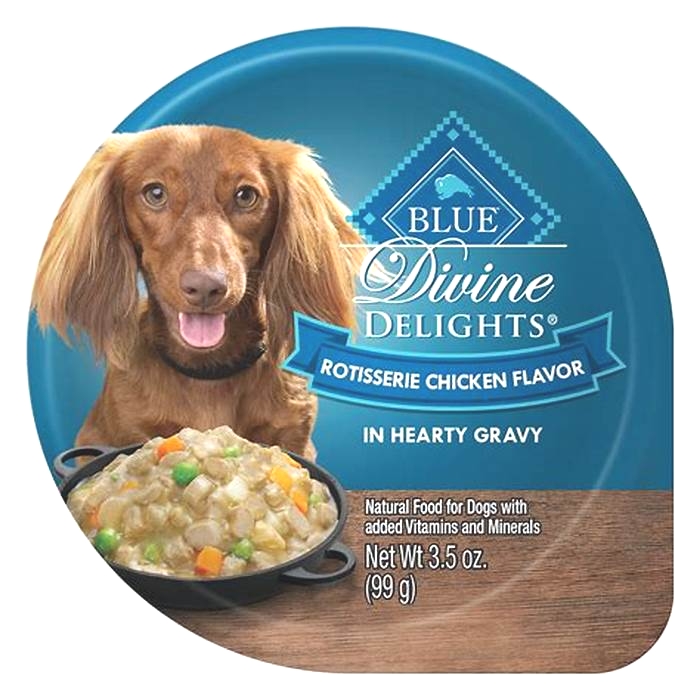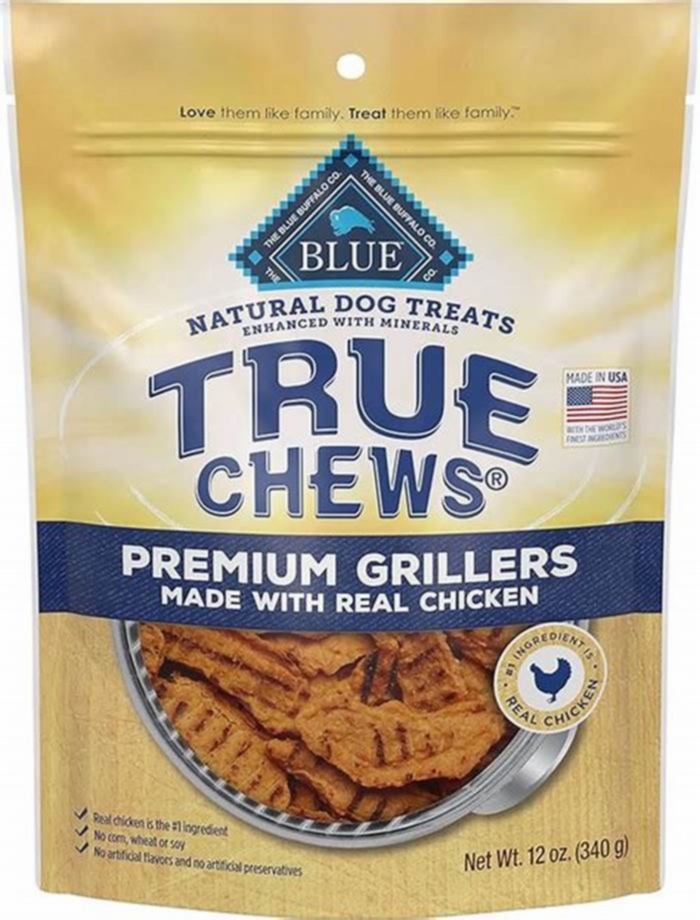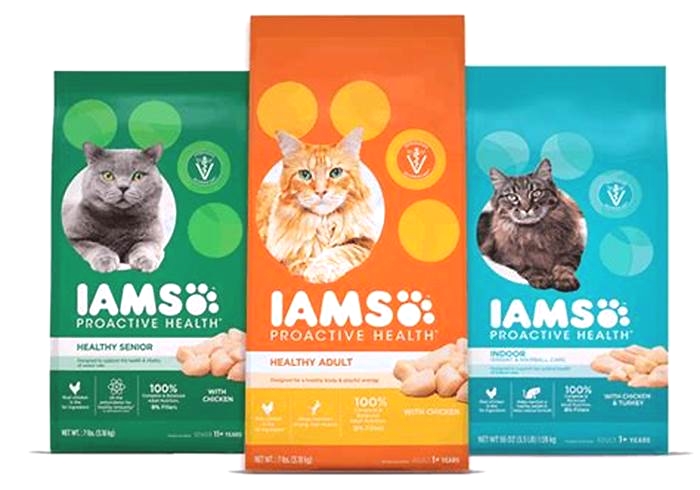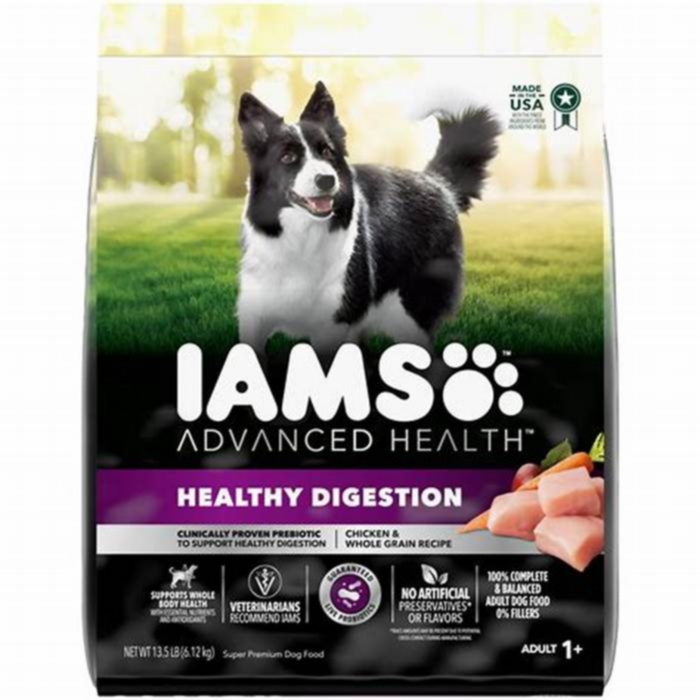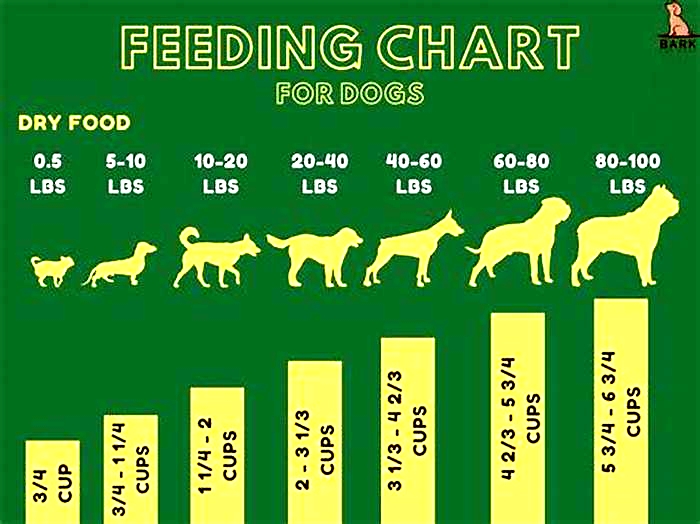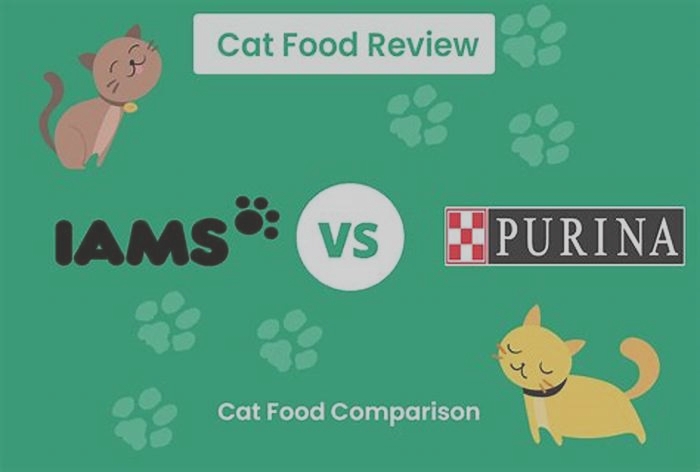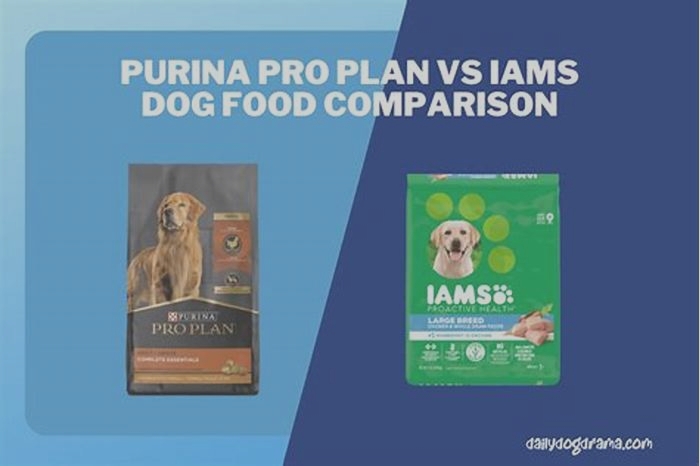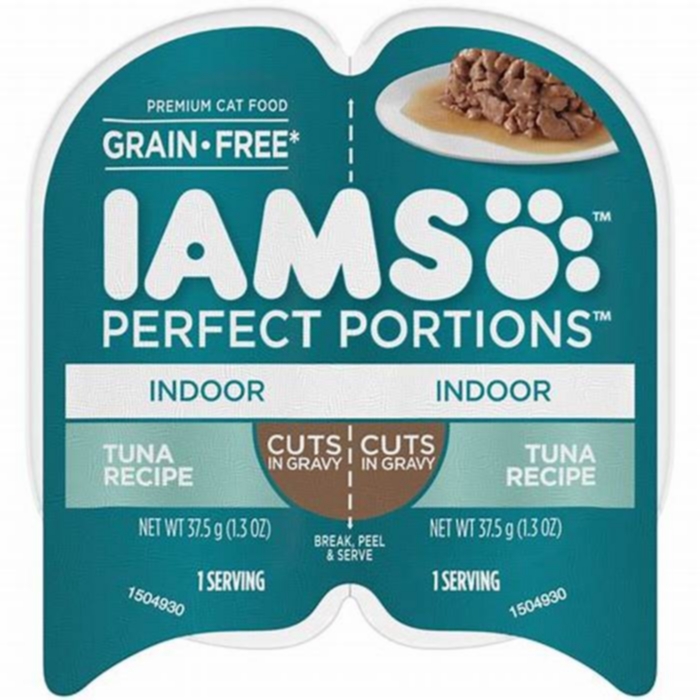Is IAMS all natural
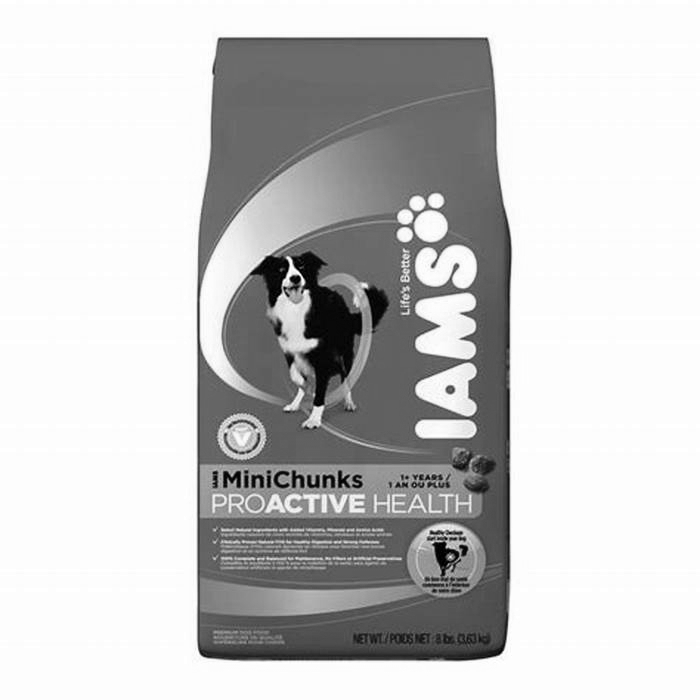
Iams Dog Food Review (2024)
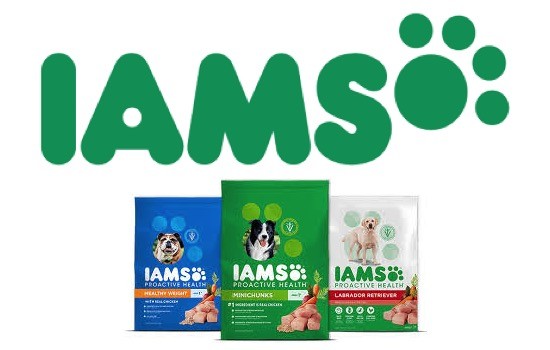
Iams Dog Food Review
IAMS offers two distinct product lines, each with its own set of characteristics and considerations. The Dry Food line consists of 12 recipes, scoring 2.5/10, categorizing them as high-risk dog foods.
Similarly, the canned line comprises 6 recipes with a score of 4.1/10, also falling into the high-risk category. Both the Dry and Canned foods undergo several stages of heating, leading to nutrient loss and contributing to their respective lower scores. IAMS claims to exclude wheat and soy from its dry kibble recipes; however, the carbohydrate content remains significant, averaging around 50%.
Common sources such as corn, sorghum, barley, or rice are utilized, potentially impacting the overall nutritional profile. The Canned line, while generally having lower carbohydrates, maintains an average of 23%, which is higher than optimal. Concerningly, there is limited information on ingredient sourcing and quality on the IAMS website. Notably, low-starch vegetables are absent from both product lines. Instead, ingredients like dried beet pulp and tomato pomace, by-products from human-grade food production, are included.
Although carrots and yams are present, their placement on the ingredient list suggests minimal contribution. All IAMS recipes incorporate added vitamins, minerals, and amino acids to meet AAFCO standards, indicating potential reliance on poor-quality or overly processed ingredients. Unnamed animal proteins and plant protein in some recipes raise concerns about ingredient quality. In terms of ingredient safety, 10 out of the 12 kibble recipes score poorly, with potential issues including high pesticide and GMO ingredients, rice with arsenic contamination risk, added color, and the use of natural flavor, a lower-quality ingredient.
The canned foods fare slightly better due to reduced processing and the absence of GMO ingredients, yet they still contain high pesticide ingredients, rice, added color, natural flavor, carrageenan, linked to intestinal inflammation, and synthetic preservatives. IAMS does not disclose the omega-6:omega-3 ratio in their recipes, and the absence of information about whether fish ingredients are farmed or wild-caught is noted.
These details are significant for understanding the nutritional value and potential inflammatory effects of the products. In summary, both IAMS product lines raise concerns related to ingredient quality, processing methods, and nutrient content. It is advisable for pet owners to carefully review individual food scores and consider alternative options that align with their preferences for pet nutrition.
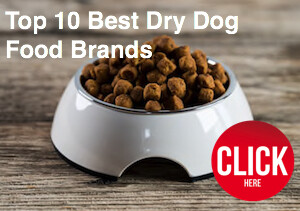
Iams Company Overview
In 1946 Iams dog food was founded by Paul Iams in Dayton, Ohio. Paul developed multiple brands thought his career until retiring in 1982. He sold his stake to his business partner until being bought out by Proctor & Gamble in 1999. Iams operated under P&G for several years, until being sold to Mars Incorporated who took over the business in North America and other regions in 2014. The European arm was later sold to Spectrum Brands.
This brand of dog food builds on years of expertise in the field the recipes for this dog food have been developed with the guidance of pet nutritionists and veterinarians. Which is why there are special products to serve a dogs every need at each life stage. Take for instance, the specially formulated dog food that allows you to help your dog get to an ideal weight through the use of L-carnitine which can help burn fat for energy. Or the grain-free options designed to suit dogs with grain sensitivities. Theres also a Senior Plus range to battle aging and keep your dog fit and active into his golden years.

IngredientsFound in Iams Dog Food
When it comes to dog food, it is important to be sure that the ingredients that go into their meals are of the highest quality and appropriate for a carnivore. Iams takes that a step further by ensuring the dog food also has nutrients from fresh produce and fruit and vegetable pulp to amp up the fiber and nutrient intake.
- Protein: Animal protein like chicken, farm-raised beef, and eggs to help build muscle
- Vegetables and fruit: Beet. blueberry, spinach, green peas, and other fresh produce loaded with antioxidants help your pets immune health and are important for strong bones and a good coat. This healthy carb source also provides your pet with a healthy energy source.
- Whole grains like sorghum and easily digested carbs like rice for energy, minerals, and vitamins.
- Omega-3 fatty acids: Anti-inflammatory brain food for your dog.
- Omega-6 fatty acids for a glossy coat and better skin.
- Special fiber blend: Probiotics and prebiotics for better gut health and to aid digestion.
Many dog owners say they love the fact that the core ingredient in Iams is now meat rather than corn or grain. Specified animals by-products and whole corn is still found in the first 5 ingredients in most of Iams brands though.
Iams Dog Food Product Line
Iams has smartly organized its dog food along lines based on your dogs age, size, and breed. This makes it easy for you to choose the products best suited to your pup or adult dog and meet their special nutritional requirements.
- Food for each stage of a dogs life from puppy to adult to senior dog
- Healthy weight products designed to help your dog get to its ideal weight
- Sensitive skin and stomach products for dogs who have food sensitivities
- Breed specific recipes to optimize what each kind of dog needs whether it is a fussy eater like a Yorkshire Terriers or a Labrador Retriever that needs nutrition to keep its coat looking glossy.
Iams is available in both dry and wet formulas..
27 Varieties of Iams Dry Dog Food
5 Varieties of Iams Wet Dog Food
Iams vs. Natural Balance

Iams vs. Natural Balance
In this comparison article for Iams vs Natural Balance, we'll highlight the key differences between these two pet food brands. To properly compare Iams and Natural Balance, we'll use up-to-date nutritional and price information.
There are many factors to consider when choosing the best pet food brand for your pet. Factors such as ingredient quality, guaranteed analysis, product safety, brand history, and cost are among the most important factors to consider.
Throughout this Natural Balance vs Iams comparison, we've utilized average data to make general comparisons. If you'd like to see individual product reviews, visit our Iams Review Page or Natural Balance Review Page.
Guaranteed Analysis: Natural Balance vs. Iams
According to AAFCO, all pet food labels must provide a guaranteed analysis of nutrient content. The analysis must provide guaranteed minimum percentages of crude protein and crude fat, and maximum percentages of crude fiber and moisture.
All percentages used in this comparison are averages reported on a dry matter basis.
Iams Dog Food vs. Natural Balance Dog Food
| Dry Dog Food | Iams | Natural Balance |
| Crude Protein | 27.6% | 27.6% |
| Crude Fat | 14.9% | 14.4% |
| Crude Fiber | 5.2% | 5.2% |
| Wet/Canned Dog Food | Iams | Natural Balance |
| Crude Protein | 40.9% | 39.7% |
| Crude Fat | 23.4% | 20.5% |
| Crude Fiber | 5.4% | 8.5% |
Crude Protein Comparison For Dog Food
Protein is an extremely important part of your dog's diet. Without sufficient protein, dogs can develop a wide-range of serious health problems.
Both brands provide roughly the same amount of crude protein. With regards to wet dog food, Iams and Natural Balance also provide roughly the same amount of crude protein.
Crude Fat Comparison For Dog Food
Dietary fats serves a multitude of roles in the proper development and function of our canine companions. Here are some of the benefits (not exhaustive):
- Help produce prostaglandins, which reduce inflammation among other critical functions.
- Aid in the absorption of fat-soluble vitamins
- Improve skin and coat health
- Improve the palatially of your dog's food
As you can see, Natural Balance and Iams guarantee a similar amount of crude fat. For wet dog foods, Iams typically provides a little more fat (about 2.89% more).
Iams and Natural Balance both provide roughly the same amount of crude fiber. For wet dog foods, Natural Balance typically provides a little more fiber (about 3.03% more).
Iams Cat Food vs. Natural Balance Cat Food
| Dry Cat Food | Iams | Natural Balance |
| Crude Protein | 35.7% | 36.8% |
| Crude Fat | 15.9% | 14.3% |
| Crude Fiber | 4.6% | 5.5% |
| Wet/Canned Cat Food | Iams | Natural Balance |
| Crude Protein | 46.7% | 46.7% |
| Crude Fat | 21.8% | 20.2% |
| Crude Fiber | 4.9% | 7.1% |
Crude Protein Comparison For Cat Food
Protein is an extremely important part of your cat's diet. Without sufficient protein, cats can develop a wide-range of serious health problems.
There is a relatively insignificant difference between the crude protein content of the two brands. With regards to wet cat food, Natural Balance and Iams also provide roughly the same amount of crude protein.
Crude Fat Comparison For Cat Food
There are many ways in which dietary fat contributes to the overall health of our feline friends. Here is a short list of benefits provided by fats (not exhaustive):
- Aid in the digestion and absorption of fat-soluble vitamins
- Improve the health of skin/coat
- Slow the growth of yeast infections
- Slow the development and spread of certain type of cancers.
- Maintain healthy blood pressure
Iams Pet Food Ingredients vs. Natural Balance Pet Food Ingredients
Iams and Natural Balance both use the following controversial ingredients in many of their products:
Beet PulpBeet pulp is the by-product which remains once sugar has been extracted from sugar beets. The primary contribution of beet pulp is dietary fiber.
We'd also like to note that beet pulp is fairly controversial in pet food. Proponents claim that beet pulp can promote intestinal health and regulate blood sugar. However, opponents claim that beet pulp is an inexpensive filler.
Canola OilCanola oil is a plant-derived oil from the seeds of canola plants. Although fat is an essential component of any diet, canola oil is controversial in pet food. Proponents claim that canola oil provides a better fat profile in comparison to other plant based oils. However, opponents claim that canola oil is typically produced with genetically modified rapeseed and that rapeseed oil has multiple adverse health affects.
Pea ProteinPea protein is produced by removing the starchy parts of peas. Pea protein is considered controversial because it provides a substantial plant based protein boost. This boost is undesirable because plant based protein is typically lower in biological value when compared to meat based proteins.
Brewers RiceBrewer's rice is the small fragments of rice kernel that are separated from the larger kernels of milled rice. The fragments do not contain the same nutrition profile of the whole kernel and therefore brewer's rice is a lower quality grain. Brewer's rice is typically regarded as an inexpensive and low quality filler.
Caramel ColorCaramel color is a concentrated form of caramel, a natural food colorant. Caramel color has been linked to cancer in laboratory animals. Since our pets do not care about food color, caramel color is an unnecessary addition with possible health risks.
Feeding OatmealAccording to AAFCO, feeding oatmeal "is obtained in the manufacture of rolled oat groats or rolled oats". It contains "broken oat groats, oat groat chips, and floury portions of the oat groats." In other words, feeding oatmeal is an inexpensive by-products of rolled oat processing.
Poultry GibletsPoultry giblets includes the heart, liver, gizzards, and other internal organs of poultry. Organs are nutritiously dense ingredients which provide high quality protein and fat. However, this particular ingredient is considered an anonymous meat ingredient because the type of poultry is not specified. In order words, "named" giblets such as chicken giblets or turkey giblets are preferred over poultry giblets.
Dried Tomato PomaceDried tomato pomace is a by-product of tomato manufacturing. It's considered a controversial ingredient because many people believe it is an inexpensive low quality filler. However, tomato pomace provides a notable amount of dietary fiber, B vitamins, Lycopene, and vitamin A. Although it is a very inexpensive ingredient, it is not nutritionally empty.
Here are some of the controversial ingredients used only by Iams.
LiverLiver is a controversial ingredient because the source animal is not specified. Anonymous animal ingredients are typically very low quality and may contain almost any animal, including dogs and cats!
CaramelCaramel is a widely used natural food colorant. The concentrated form of caramel is typically listed as caramel color and has been linked to cancer in laboratory animals. Since our pets do not care about food color, caramel is an unnecessary addition with possible health risks.
Corn MealCorn meal is another name for ground corn. Corn is a cereal grain which provides a modest amount of vitamins, minerals, and plant based protein. It also happens to be one of the most controversial ingredients in pet food.
Proponents of corn claim that corn is highly digestible and an excellent source of protein, energy, vitamins, minerals, and essential fatty acids.
Opponents however believe that positive claims in regards to corn are either half-truths or completely false, we'll discuss a few of the opposing arguments.
In regards to digestibility, the claims of "highly digestible" are only true if corn is processed into a meal or flour and subsequently cooked. In regards to the protein contribution, we must note that corn is a plant based protein which does not contain all of the necessary amino acids required by pets to sustain life. Therefore substituting corn for meat is an unsuitable substitution and actually degrades the overall protein quality of the product.
Finally, we'll discuss the claims about vitamins and minerals in corn. Although corn does provide many vitamins and minerals, it not necessarily an exceptional ingredient in this regards. There are many other ingredients which are more complete and biologically appropriate. Therefore the usage of corn as the primary ingredient in pet food should certainly warrant further questioning.
Corn GritsCorn grits are made from ground corn. Corn is a cereal grain which provides a modest amount of vitamins, minerals, and plant based protein. It also happens to be one of the most controversial ingredients in pet food.
Proponents of corn claim that corn is highly digestible and an excellent source of protein, energy, vitamins, minerals, and essential fatty acids.
Opponents however believe that positive claims in regards to corn are either half-truths or completely false, we'll discuss a few of the opposing arguments.
In regards to digestibility, the claims of "highly digestible" are only true if corn is processed into a meal or flour and subsequently cooked. In regards to the protein contribution, we must note that corn is a plant based protein which does not contain all of the necessary amino acids required by pets to sustain life. Therefore substituting corn for meat is an unsuitable substitution and actually degrades the overall protein quality of the product.
Finally, we'll discuss the claims about vitamins and minerals in corn. Although corn does provide many vitamins and minerals, it not necessarily an exceptional ingredient in this regards. There are many other ingredients which are more complete and biologically appropriate. Therefore the usage of corn as the primary ingredient in pet food should certainly warrant further questioning.
Iron OxideIron oxide is an FDA approved natural food coloring agent. It's commonly found in rusting metal and provides a reddish-brown color.
We believe food colorants are unnecessary ingredients in pet food. Other than potential harm, food colorants do not provide any nutritional value. These type of ingredients are used only to make the food look appealing to humans.
Fish DigestFish digest is the result of undecomposed fish tissue after hydrolysis, a chemical reaction. It is typically used as flavoring to improve taste. Fish digest is considered by many as an undesirable low-quality ingredient.
Ground CornGround corn is a cereal grain which provides a modest amount of vitamins, minerals, and plant based protein. It also happens to be one of the most controversial ingredients in pet food.
Proponents of corn claim that corn is highly digestible and an excellent source of protein, energy, vitamins, minerals, and essential fatty acids.
Opponents however believe that positive claims in regards to corn are either half-truths or completely false, we'll discuss a few of the opposing arguments.
In regards to digestibility, the claims of "highly digestible" are only true if corn is processed into a meal or flour and subsequently cooked. In regards to the protein contribution, we must note that corn is a plant based protein which does not contain all of the necessary amino acids required by pets to sustain life. Therefore substituting corn for meat is an unsuitable substitution and actually degrades the overall protein quality of the product.
Finally, we'll discuss the claims about vitamins and minerals in corn. Although corn does provide many vitamins and minerals, it not necessarily an exceptional ingredient in this regards. There are many other ingredients which are more complete and biologically appropriate. Therefore the usage of corn as the primary ingredient in pet food should certainly warrant further questioning.
Wheat GlutenWheat gluten is the main protein of wheat. Although wheat gluten is mostly protein, wheat gluten is considered controversial because it significantly boosts the protein content of the product. This is undesirable because plant based protein does not provide the same amino acid profile as meat based protein.
Vegetable OilSpecific vegetable oils are typically positive ingredients; however, this ingredient does not specify which vegetable(s) were used to produce the oil.
Without this information, it is impossible for us to make any specific statements. With any fat source, it is important to know the omega-3 to omega-6 fatty acid ratio, a property which cannot be determined with this ingredient. Thus, we have marked vegetable oil as a controversial ingredient.
Corn Gluten MealCorn gluten meal is a by-product from the production of various corn products (corn starch, corn syrup, etc). It's very high in protein (nearly 60% protein) and therefore can significant boost the protein content of the product. Because plant based proteins such as corn gluten meal are inferior to meat based proteins (lack many essential amino acids), they are not suitable substitutes.
Meat By-ProductsBy-products are defined by AAFCO as the "non-rendered, clean parts, other than meat, derived from slaughtered mammals." Thus, meat by-products contain nearly all parts of the animal which are typically not consumed by humans. These parts include the liver, lung, spleen, kidney, stomach, blood, intestine, bone, etc.
This ingredient is marked controversial because the meat source is not identified. Anonymous ingredients such as meat by-products are typically very low quality additions. The most unpleasing property of this ingredient is that the animal source can contain any mammal, even dogs & cats.
Powdered CellulosePowdered cellulose is produced from minuscule pieces of wood pulp and plant fibers. Other than its fiber content, powdered cellulose lacks any nutritional contribution.
Chicken By-ProductsBy-products are defined by AAFCO as the "non-rendered, clean parts, other than meat, derived from slaughtered mammals." Thus, chicken by-products contain nearly all parts of the chicken which are typically not consumed by humans. These parts include the liver, lung, spleen, kidney, stomach, blood, intestine, bone, etc.
Like other meat by-products, chicken by-products are considered controversial, mainly because they are inexpensive ingredients which consumers have equated with slaughterhouse waste. However, manufactures and many experts claim that animal by-products are unjustly criticized. Proponents state that "named" by-products, such as chicken by-products, supply many important nutrients required by pets.
Dried Meat By-ProductsBy-products are defined by AAFCO as the "non-rendered, clean parts, other than meat, derived from slaughtered mammals." Thus, dried meat by-products contain nearly all parts of the animal which are typically not consumed by humans. These parts include the liver, lung, spleen, kidney, stomach, blood, intestine, bone, etc.
This ingredient is marked controversial because the meat source is not identified. Anonymous ingredients such as dried meat by-products are typically very low quality additions. The most unpleasing property of this ingredient is that the animal source can contain any mammal, even dogs & cats.
Chicken By-Product MealChicken by-product meal is produced by cooking chicken by-products using a process called rendering. By-products are defined by AAFCO as the "non-rendered, clean parts, other than meat, derived from slaughtered mammals." Thus, chicken by-products contain nearly all parts of chickens which are typically not consumed by humans. These parts include the liver, lung, spleen, kidney, stomach, blood, intestine, bone, etc.
Like other meat by-products, chicken by-products are considered controversial, mainly because they are inexpensive ingredients which consumers have equated with slaughterhouse waste. However, manufactures and many experts claim that animal by-products are unjustly criticized. Proponents state that "named" by-products, such as chicken by-products, supply many important nutrients required by pets.
Ground Whole Grain CornGround whole grain corn contains the entire corn kernel (the germ, bran, and endosperm). Corn is a cereal grain which provides a modest amount of vitamins, minerals, and plant based protein. It also happens to be one of the most controversial ingredients in pet food.
Proponents of corn claim that corn is highly digestible and an excellent source of protein, energy, vitamins, minerals, and essential fatty acids.
Opponents however believe that positive claims in regards to corn are either half-truths or completely false, we'll discuss a few of the opposing arguments.
In regards to digestibility, the claims of "highly digestible" are only true if corn is processed into a meal or flour and subsequently cooked. In regards to the protein contribution, we must note that corn is a plant based protein which does not contain all of the necessary amino acids required by pets to sustain life. Therefore substituting corn for meat is an unsuitable substitution and actually degrades the overall protein quality of the product.
Finally, we'll discuss the claims about vitamins and minerals in corn. Although corn does provide many vitamins and minerals, it not necessarily an exceptional ingredient in this regards. There are many other ingredients which are more complete and biologically appropriate. Therefore the usage of corn as the primary ingredient in pet food should certainly warrant further questioning.
Poultry By-Product MealPoultry by-product meal is a controversial ingredient because the source animal is not specified. Anonymous ingredients such as poultry by-product meal are typically low-quality ingredients in comparison to named protein by-product meals (e.g. chicken by-product meal, turkey by-product meal, duck by-product meal).
Animal Fat (Preserved With Mixed Tocopherols)Animal fat is a by-product of tissue rendering. The source animal is not specific and therefore we cannot be certain that the source does not include diseased animals or even euthanized dogs and cats.
Poultry Fat (Preserved With Mixed Tocopherols)Poultry fat is a by-product of poultry tissue rendering. Poultry fat is a controversial ingredient because the specific protein is not specified. Such ingredients are typically low-quality in comparison to named poultry fats (e.g. chicken fat, turkey fat).
Here are some of the controversial ingredients used only by Natural Balance.
GibletsGiblets may include the heart, liver, gizzards, and other visceral organs of an animal. These organs are very nutritious and species-appropriate for pets. However, the specific source of the giblets are not disclosed (chicken, turkey, etc) and therefore we must classify this ingredient as an anonymous meat.
Tomato PomaceTomato pomace is a by-product of tomato manufacturing. It's considered a controversial ingredient because many people believe it is an inexpensive low quality filler. However, tomato pomace provides a notable amount of dietary fiber, B vitamins, Lycopene, and vitamin A. Although it is a very inexpensive ingredient, it is not nutritionally empty.
Canola Oil (Preserved With Mixed Tocopherols)Canola oil is a plant-derived oil from the seeds of canola plants. Although fat is an essential component of any diet, canola oil is controversial in pet food. Proponents claim that canola oil provides a better fat profile in comparison to other plant based oils. However, opponents claim that canola oil is typically produced with genetically modified rapeseed and that rapeseed oil has multiple adverse health affects.
We believe that certain pet food ingredients are linked to adverse health affects; these ingredients are classified as harmful.
Iams and Natural Balance both use the following harmful ingredients in many of their products:
Menadione Sodium Bisulfite ComplexMenadione sodium bisulfite complex is a synthetic version of vitamin K that has been linked to many health concerns. Research has suggested possible toxic reactions in liver cells and red blood cells among other serious problems. In fact, one large chemical supplier warns, "The substance is toxic to kidneys, lungs, liver, mucous membranes. Repeated or prolonged exposure to the substance can produce target organs damage."
Here are some of the harmful ingredients used only by Iams.
Blue 2Blue 2 is an artificial dye which can increase the likelihood of tumors according to the Center for Science in the Public Interest. Like other dyes, blue 2 does not provide any nutritional value.
Red 40Red 40 is the most widely used artificial dye in consumer goods. Studies have shown that red 40 may accelerate the appearance of immune-system tumors in mice, cause allergy-like reactions and trigger hyperactivity in children.
Yellow 5Yellow 5 is an artificial dye which may be contaminated with several cancer-causing chemicals. Like other dyes, yellow 5 does not provide any nutritional value.
Yellow 6Yellow 6 is an artificial food dye which may be contaminated with cancer-causing chemicals. According to the Center For Science In The Public Interest, yellow 6 can cause adrenal tumors in animals.
Added ColorThe ingredient "added color" is ambiguous and may include various artificial dyes. Most artificial dyes have been linked to various chronic diseases.
Here are some of the harmful ingredients used only by Natural Balance.
Menadione Sodium Bisulfate ComplexMenadione sodium bisulfate complex is a synthetic version of vitamin K that has been linked to many health concerns. Research has suggested possible toxic reactions in liver cells and red blood cells among other serious problems. In fact, one large chemical supplier warns, "The substance is toxic to kidneys, lungs, liver, mucous membranes. Repeated or prolonged exposure to the substance can produce target organs damage."
Product Safety: Recall History of Iams & Natural Balance?
Iams has been recalled 2 times.
- Aug. 14, 2013: Salmonella
- July 30, 2010: Salmonella
Natural Balance has been recalled 6 times.
- July 21, 2007: ofbotulinum toxin
- May 4, 2012: Salmonella
- June 18, 2010: Salmonella
- April 27, 2007: Melamine
- April 17, 2007: Melamine
- July 3, 2020: elevated levels of choline chloride
Price Comparison: Which Brand Is More Expensive?
| Dry Dog Food | Iams | Natural Balance |
| Per Pound | $1.52 | $5.23 |
| Per Calorie | $0.0009 | $0.0029 |
| Dry Cat Food | Iams | Natural Balance |
| Per Pound | $2.03 | $3.69 |
| Per Calorie | $0.0012 | $0.0023 |
| Wet Dog Food | Iams | Natural Balance |
| Per Pound | $1.90 | $6.27 |
| Per Calorie | $0.0038 | $0.0137 |
| Wet Cat Food | Iams | Natural Balance |
| Per Pound | $6.97 | $7.63 |
| Per Calorie | $0.0151 | $0.0183 |
The average cost-per-lb is heavily influenced by the varying amounts of moisture present in each brand's food products (wet vs. dry food, dry vs. freeze-dried food, etc). However, the average cost-per-kcal eliminates the influence of moisture. Therefore, the average cost-per-kcal is the better metric to consider.
If you'd like to calculate the average cost-per-day or cost-pet-year of feeding Iams or Natural Balance, input your pet's weight into our cost analyzer widget.
Averages price data can identify whether or not there exists a significant price difference between two brands. However, the actual price that you'll pay for Iams or Natural Balance will depend on your shopping habits.
Pet owners who use our price comparison feature typically save more than 25% off retail prices for Iams and Natural Balance. In addition, we currently have some great coupons for our readers.
Disclosure: PawDiet has an affiliate relationship with stores featured (or linked-to) in this article. We are compensated for referring customers. Thank you for shopping with our retail partners!
Where To Buy Iams Pet Foods
You can purchase Iams pet foods from the following stores:
33 Recipes In-Stock Today
15 Recipes In-Stock Today
24 Recipes In-Stock Today
Where To Buy Natural Balance Pet Foods
You can purchase Natural Balance pet food products from these retailers:
96 Recipes In-Stock Today
79 Recipes In-Stock Today
82 Recipes In-Stock Today
16 Recipes In-Stock Today
Type Of Pet Foods Available
| Product | Iams | Natural Balance |
| Dry Dog Food | 24 Recipes | 39 Recipes |
| Wet Dog Food | 8 Recipes | 27 Recipes |
| Dog Treats | None | 33 Treats |
| Dry Cat Food | 13 Recipes | 16 Recipes |
| Wet Cat Food | 13 Recipes | 43 Recipes |
| Cat Treats | 2 Treats | None |
Top Rated Iams Recipes
Dog Food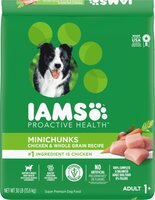
IamsMinichunks Chicken & Whole Grains Recipe
Check PriceDog Food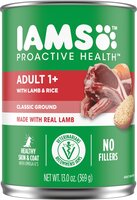
IamsProactive Health Pate With Lamb and Rice
Check PriceCat Food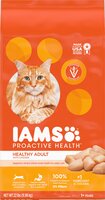
IamsProactive Health Healthy Adult With Chicken
Check PriceCat Food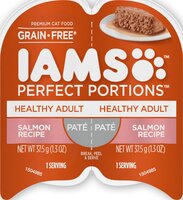
IamsPerfect Portions Salmon Recipe Pate For Healthy Adult Cats
Check PriceTop Rated Natural Balance Recipes
Dog Food
Natural BalanceTargeted Nutrition Fat Dogs Dry Dog Food
Check PriceDog Food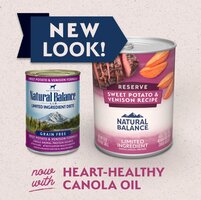
Natural BalanceLimited Ingredient Diets Sweet Potato & Venison Formula
Check PriceCat Food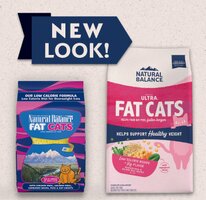
Natural BalanceUltra Premium Cat Food Fat Cats
Check PriceCat Food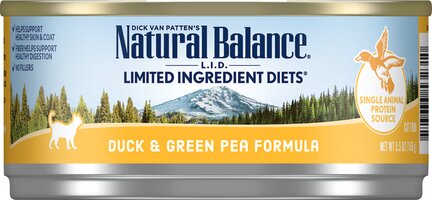
Natural BalanceLimited Ingredient Diets Duck & Green Pea Formula
Check Price
